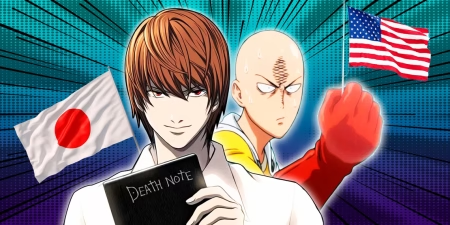Why Anime Fans Should Stop Arguing About Subs Vs. Dubs
- 05-Mar-2024, 03:45
- 0 Comments
- 14 views

These are valid points in favor of watching anime subbed. Japanese voice actors often bring a level of authenticity and passion to their performances that can enhance the viewing experience. Additionally, the nuances of the Japanese language, including wordplay, cultural references, and unique expressions, can be difficult to fully capture in translation.
Furthermore, subbed anime allows viewers to experience the original intent of the creators and voice actors. By listening to the dialogue in Japanese, audiences can immerse themselves more fully in the cultural context of the story and appreciate the nuances of the language.
There Are Reasons to Watch Anime Dubbed
On the other hand, there are compelling reasons to watch anime dubbed as well. One of the primary benefits is accessibility. Dubbed versions make anime more accessible to a wider audience, including those who may not be fluent in Japanese or prefer to watch content in their native language.
Moreover, a well-done dub can enhance the viewing experience by providing voice acting performances that resonate with the audience. While it's true that some older dubs may have lacked quality, many modern dubs feature talented voice actors who bring characters to life with authenticity and emotional depth.
Additionally, dubbing allows for localization, where cultural references and wordplay can be adapted to better resonate with the target audience. This can make the dialogue more relatable and easier to understand for viewers who are not familiar with Japanese culture.
Ultimately, whether to watch anime subbed or dubbed comes down to personal preference. Both versions have their strengths and weaknesses, and what matters most is enjoying the story and characters in a way that feels most enjoyable and immersive to the viewer. Instead of arguing over which version is superior, it's more productive to appreciate the efforts of both subbing and dubbing teams in bringing anime to a global audience.
Anime dubbing has undergone significant changes over the years, evolving from a niche practice to a sophisticated art form. In the early days of anime localization, dubs often received criticism for their poor quality, including awkward translations, mismatched voice acting, and cultural inaccuracies. However, advancements in dubbing technology, talent, and techniques have transformed the landscape of anime dubbing, leading to a higher standard of quality and authenticity.
One of the most notable changes in anime dubbing is the emphasis on faithful translation and localization. Modern dubbing studios prioritize accuracy and cultural sensitivity, striving to preserve the original intent of the Japanese dialogue while making adjustments to ensure that it resonates with Western audiences. This includes retaining cultural references whenever possible and providing context for elements that may be unfamiliar to non-Japanese viewers.
Additionally, the talent pool of English voice actors has expanded significantly, with many dub actors achieving recognition for their skilled performances. Dubbing studios now employ professional voice actors who specialize in anime dubbing, bringing characters to life with nuance, emotion, and authenticity. These actors undergo rigorous training and audition processes to ensure that they are well-suited for their roles, resulting in performances that rival those of their Japanese counterparts.
Furthermore, advancements in dubbing technology have streamlined the production process, allowing for quicker turnaround times and higher quality audio. Dubbing studios utilize state-of-the-art recording equipment and software to achieve optimal sound quality and synchronization with the original animation. This ensures that the final product meets the standards of both fans and industry professionals.
Overall, the evolution of anime dubbing reflects the growing popularity and globalization of anime as a medium. While there may still be debates over the superiority of subs versus dubs, there is no denying the significant improvements that have been made in the quality and authenticity of English-language anime dubs over the years.
The censorship of anime dubs has also become less prevalent in recent years. While some edits may still occur to comply with broadcasting standards or cultural sensitivities, dubbing studios are increasingly committed to preserving the integrity of the original material. This allows viewers to experience the anime as intended by its creators, without significant alterations or omissions.
Overall, the current state of anime dubs reflects a greater appreciation for the art of dubbing and a commitment to providing viewers with high-quality, authentic translations and performances. While debates over subs versus dubs may continue, it's clear that anime dubbing has come a long way from its early days and now stands as a respected and integral part of the anime industry.
You're absolutely right about the art of localization playing a significant role in shaping the viewing experience of foreign media, including anime. While it's true that some of the original meaning may be lost in translation, a skilled localizer can add depth and nuance to the material through clever writing and adaptation.
Pokémon is a fantastic example of how localization can enhance a series. While the original 4Kids dub may have taken liberties with the source material, it also introduced memorable characters, catchphrases, and cultural references that resonated with Western audiences. The shift in writing style when The Pokémon Company International took over the dub demonstrates how different approaches to localization can impact the overall tone and appeal of a series.
Additionally, there are dubs that take creative liberties with the material, resulting in a unique and entertaining viewing experience. Anime like Ghost Stories, Panty & Stocking with Garterbelt, Bobobo-bo Bo-bobo, and Lupin the 3rd Part III have gained popularity for their humorous and irreverent English dubs. While these dubs may not adhere strictly to the original dialogue, they offer a fresh perspective and inject humor into the series that resonates with audiences.
In essence, localization is an art form that requires skill, creativity, and cultural sensitivity. When done well, it can enhance the enjoyment of a series and provide viewers with a unique interpretation of the source material.